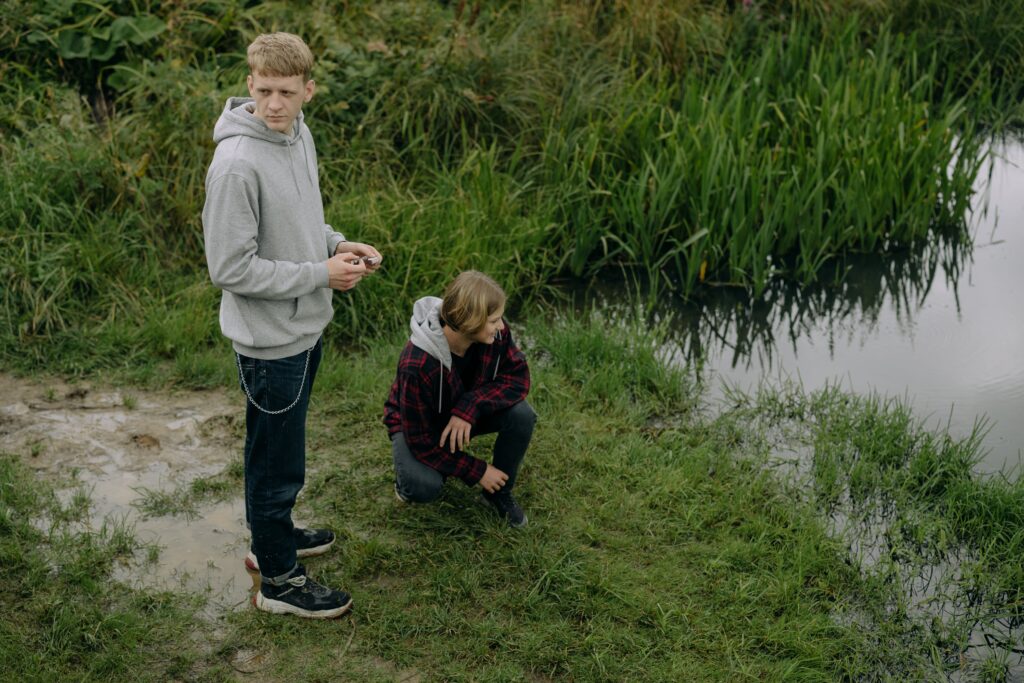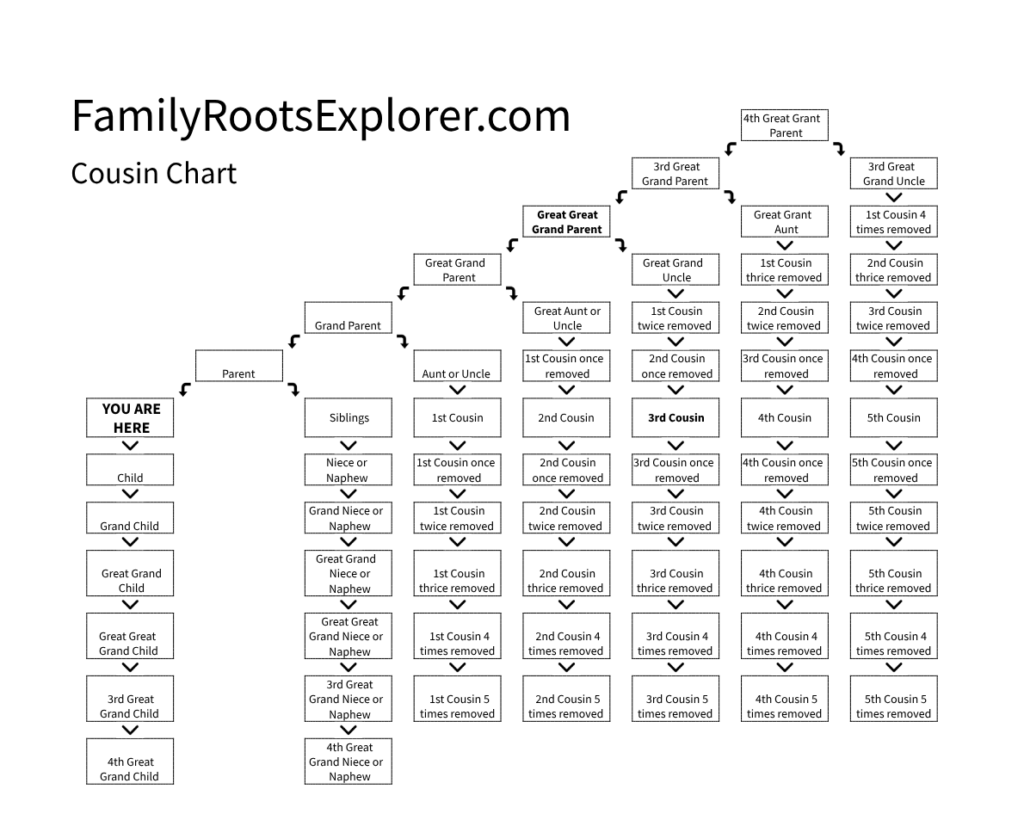Have you ever wondering what is the term first cousin once removed meaning and wondered what it meant? Don’t worry, you’re not alone. The world of genealogy can be filled with confusing terminology, making it difficult to decipher the exact relationships between family members. But fear not, because in this blog post, we will unravel the code of cousin once removed meaning and explain what the term “removed” actually refers to. And if you’re still feeling a bit lost, be sure to check out our previous post where we delved into the intricate web of cousin relationships. So let’s dive in and clear up any confusion once and for all!
Understanding the Basics of Cousins:

Before we delve into the intricacies of “first cousin once removed,” let’s get a firm grasp on the concept of cousins. At the heart of it, cousins are family members who share a common set of grandparents. Your first cousins share the same grandparents with you, meaning they are the children of your aunts and uncles. However, the cousin relationship extends further. Your second cousins share great-grandparents with you, and your third cousins share great-great-grandparents, and so on. This progression continues with each generation. To add to the complexity, these relationships can also be “removed.” This additional label indicates a generational difference in the cousin relationship. These explanations might make your head spin a bit, but don’t worry. We’re here to make it all crystal clear. So sit tight, we’re about to decode the cousin conundrum and unravel the mysteries of the “first cousin once removed.”
What Does ‘Once Removed’ Mean?
The term “once removed” might sound rather mysterious, but its meaning is rooted in the simple logic of generational differences. So, if you hear “first cousin once removed,” what does it imply? It signals a one-generation gap in the cousin equation. This could mean two different things. First, it could refer to the child of your first cousin. This child would be a generation younger than you, hence the term “removed.” On the flip side, it could also represent the first cousin of your mother or father. In this case, your parent’s cousin would be a generation older than you. That’s right, the “once removed” can swing both ways – upwards or downwards on the family tree. It’s all about the intergenerational leap! So, the next time you’re introduced to a “first cousin once removed,” you’ll know exactly where they fit in your extended family jigsaw.
Identifying Your First Cousin Once Removed

Navigating the labyrinth of family relationships can often be a daunting task. However, pinpointing who your first cousin once removed is can be achieved by looking in two directions – one generation above you, or one below.
Imagine a family gathering. You see your cousin, who you share grandparents with. Now, if your cousin has a child, that child becomes your first cousin once removed. Here, the “removal” refers to a generational step away from you. This person belongs to the generation below you.
On the other hand, consider your parents’ generation. Your parents have cousins too, right? Just like you share grandparents with your cousin, your parents shared grandparents with their cousins. Now, these cousins of your parents are also your first cousins once removed. But in this case, the “removal” means they belong to the generation above you.
Therefore, your first cousin once removed could either be part of the generation before you or the generation that follows you. It all depends on whether you are tracing your lineage upwards or downwards in your family tree. So the next time you’re navigating your family ties, remember that the clue to identifying your first cousin once removed lies in the direction you’re looking – up or down the generational ladder.
What is a Second Cousin Twice Removed?
Moving further down the genealogical rabbit hole, let’s address the term “second cousin twice removed.” Sounds intricate, doesn’t it? But remember our guidepost – “removed” indicates a generational difference. The “twice removed” denotes a two-generation gap. So, your second cousin twice removed could be one of two people. It could be your second cousin’s grandchild, two generations below you, or it could be the grandparent of your second cousin, two generations above you. If you recall, second cousins share a common set of great-grandparents. So, the grandchild of your second cousin would still share those same great-grandparents but would be two generations removed from you. On the other hand, your second cousin’s grandparent would also share a lineage with you, as the sibling of your great-grandparent, yet would be two generations above you. So, whether you’re scanning the family tree upwards or downwards, the term “twice removed” simply adds another generational step into the mix. It’s like a genealogical hopscotch that paints a vivid picture of our interconnected familial tapestry.
The Importance of Understanding First Cousin Once Removed Meaning
Why should we care to make sense of these complex familial ties, one might ask? Well, uncovering the secrets of your family tree isn’t just an intellectual exercise or a way to break the ice at family reunions. In reality, these relationships play a crucial role in shaping our identity and understanding of our personal history. By learning about our “first cousin once removed” or our “second cousin twice removed,” we gain insights into our ancestors, their journeys, and the familial bonds that bind us all together. Additionally, having a clear picture of our biological relationships can be vital when it comes to health matters. Familial patterns often emerge in medical history, and understanding your genetic connections can be instrumental in proactive healthcare decisions. Inheritance matters, too, are often entwined with these relationships. Thus, understanding your familial connections isn’t just about decoding the cousin conundrum, but about gaining a deeper awareness of your family’s past, present, and future. The story of our ancestors, and the relationships they formed, contribute significantly to who we are today and how we navigate our world. Indeed, the ties that bind are not just of the heart, but of the bloodline too.
Comparing Second Cousins to First Cousins Once Removed
Let’s dive into a comparison between your second cousins and your first cousins once removed. Your second cousins share a common set of great-grandparents with you. This shared lineage comes through their grandparents, who are siblings to your own grandparents. This makes you and your second cousins part of the same generation.
However, the relationship with your first cousin once removed is a bit more complex. It hinges on the generation gap. If the individual is one generation above you, they are your parents’ first cousin. They share the same grandparents with your parents. However, if the first cousin once removed is a generation below you, they are the child of your first cousin, who shares the same grandparents with you.
The intriguing point here is the unique relationship you share with these two types of cousins. With second cousins, you’re on the same generational level. On the other hand, with first cousins once removed, you experience a generational leap either upwards or downwards on your family tree. As we continue to unravel the cousin conundrum, remember that these relationships illustrate the beautiful complexity and diversity of your familial ties.
Exploring the Complexities of Cousin Relationships

Cousin relationships can indeed be intricate, with a fascinating web of connections woven through generations. The diversity and depth of these ties mirror the rich tapestry of our collective familial narratives. We often employ a cousin chart as a tool to navigate this labyrinth of relationships, helping to shed light on the subtle nuances of our shared heritage. Whether it’s pinpointing your second cousin twice removed or identifying the children of your mother’s first cousin, the chart becomes an invaluable aid in your genealogical journey. But remember, each connection you unearth, each “removal” you identify, paints a more comprehensive picture of your family’s history. They provide a glimpse into the lives of those who came before us, and those who will carry our legacy into the future. So as you delve into the vast sea of cousin relationships, remember – it’s not just about decoding the terms. It’s about exploring the threads of your lineage, appreciating the complexities, and celebrating the unique story that is your family.
Final Conclusion
Unraveling the enigma of first cousin once removed meaning might initially seem like a daunting task, but with a fundamental grasp of the cousin family tree, the concept becomes less daunting and more enlightening. These familial ties are not just terminologies in the realm of genealogy. They’re a testament to our shared past and the unbreakable bonds that knit us together as a family. Whether you’re exploring the possibility of dating a cousin, or merely interested in identifying the cousins of your parents, making sense of this intricate web of relationships can be an incredibly engaging and insightful endeavor. Remember, the journey to understanding your family’s lineage is about more than just connecting the dots—it’s about illuminating the shared narratives that weave together the tapestry of your family history.
